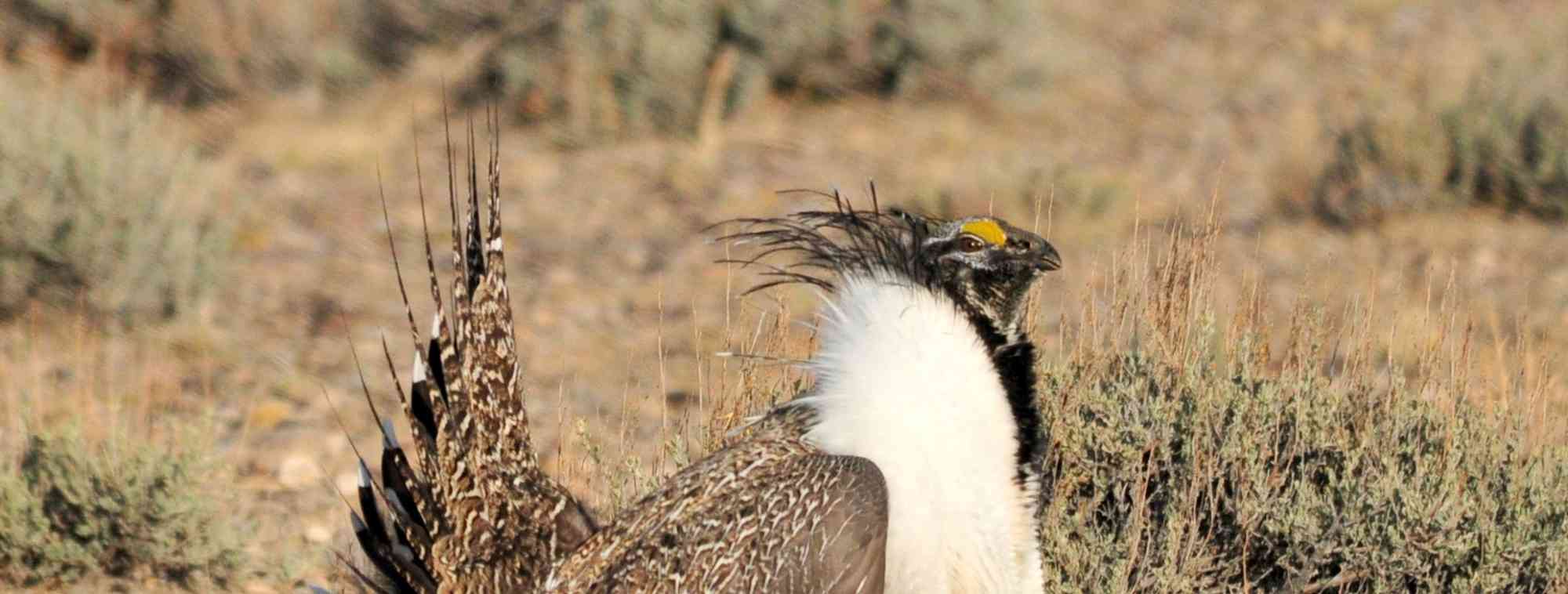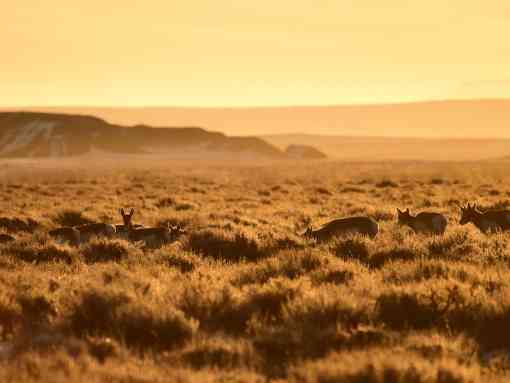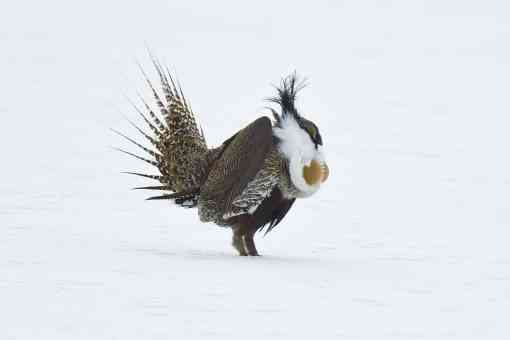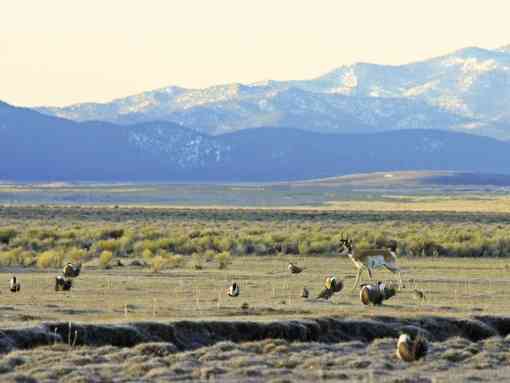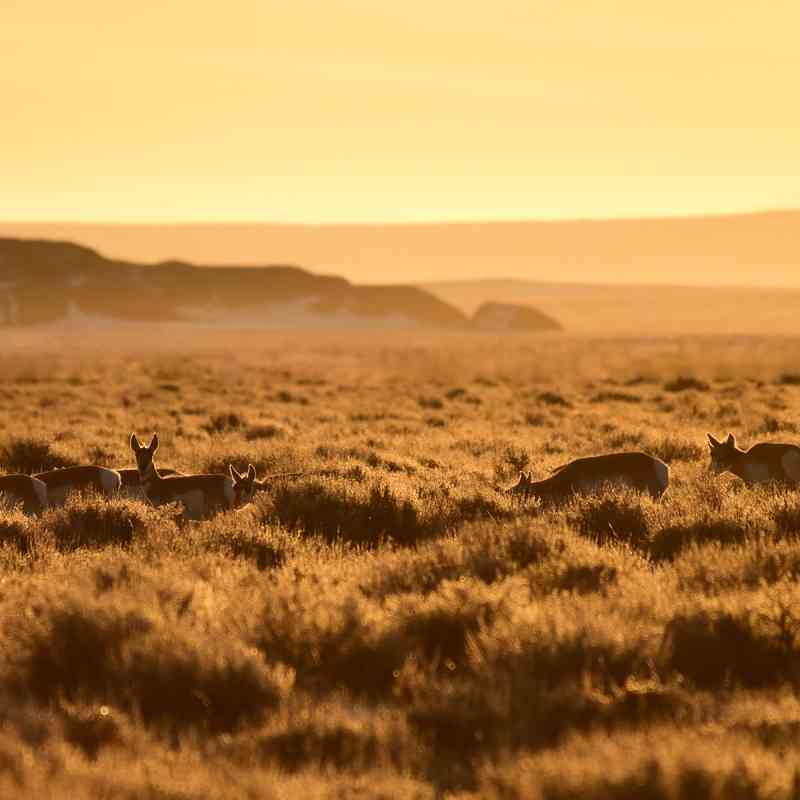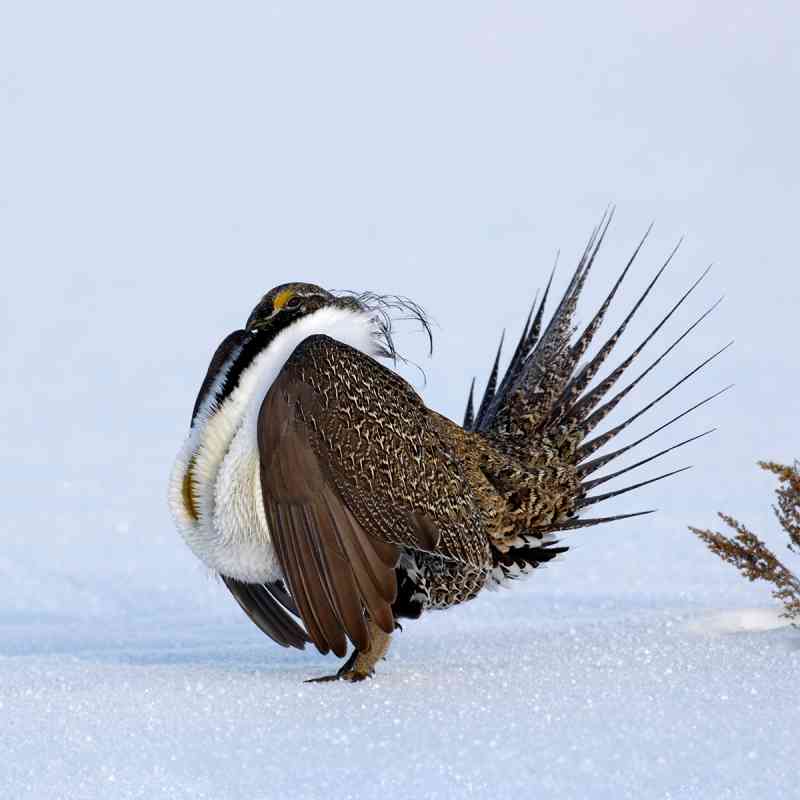Learn about current initiatives for Greater sage-grouse and Gunnison sage-grouse and how to get involved.
Greater Sage-Grouse
The Bureau of Land Management is currently revising its greater sage-grouse conservation strategy that serves as its blueprint for managing and conserving greater sage-grouse habitat across the western states.
The strategy was put into place in 2015. Since then, we have learned more about sage-grouse population and habitat trends, including how climate change is manifesting across the Sagebrush Sea.
According to recent US Geological Survey studies, greater sage-grouse populations have declined significantly over the last six decades, with an 80% rangewide decline since 1965 and a nearly 40% plunge since 2002. If current conditions persist, there’s only a 50% chance that the sage-grouse breeding grounds (called leks) will be functioning in the next 60 years. Further, the USGS found that only 14% of the Sagebrush Sea remains intact and we are losing about 1.3 million acres of sagebrush habitats every year.
The current greater sage-grouse conservation strategy is inadequate and we need to activate stronger measures if we are to reverse these alarming trends.
The Bureau of Land Management manages almost half of the remaining greater sage-grouse habitat. The revision of the greater sage-grouse conservation strategy is a major opportunity to stem the greater sage-grouse’s decline and put it on a path to recovery. By providing strong protections for the greater sage-grouse, we also help conserve hundreds of other species of conservation concern—as well as mule deer, elk, pronghorn and other majestic wildlife—that live in the Sagebrush Sea.
Greater Sage-Grouse State Fact Sheets
Colorado Sage-Grouse Fact Sheet (pdf)
Idaho Sage-Grouse Fact Sheet (pdf)
Montana Sage-Grouse Fact Sheet (pdf)
Nevada Sage-Grouse Fact Sheet (pdf)
Oregon Sage-Grouse Fact Sheet (pdf)
Habitat Maps
Check out these maps that show the overlap of priority greater sage-grouse habitat and crucial big game habitat.
Gunnison Sage-Grouse
About a third smaller in size than the more widespread greater sage-grouse, the Gunnison grouse is one of the most endangered birds in North America.
By the time scientists recognized this grouse as a distinct species in 2000, land use and development had already reduced the species’ range down to about 10% of its historical size.
Today, fewer than 4,000 birds survive in eight scattered populations in western Colorado and southeastern Utah. The Bureau of Land Management manages almost half of the remaining Gunnison sage-grouse habitat.
Defenders is dedicated to seeing the Gunnison sage-grouse recovered. In 2022, we proposed the designation of Areas of Critical Environmental Concern to better protect the last remaining habitat for Gunnison sage-grouse.
In November 2023, the Bureau of Land Management published a draft Gunnison sage-grouse conservation strategy for public review and comment. A final strategy and environmental impact statement is expected in 2024.
How You Can Help
Defenders is deeply engaged in this effort to conserve the greater sage-grouse and the many other at-risk species in the Sagebrush Sea.
In Washington, DC, we are urging the Biden administration and Congressional representatives to strengthen conservation initiatives for the Sagebrush Sea and its denizens, and out west we are diligently working to reduce further disturbances to habitats. In 2022, we formally proposed the designation of a "Sagebrush Sea Reserve Network" as part of the Bureau of Land Management's “re-think” of its greater sage-grouse conservation strategy.
And your voice can help too! When the draft Greater Sage-Grouse Conservation Strategy is published this year, tell Bureau of Land Management you support the strongest protections possible, including establishing a protected areas network across the Sagebrush Sea.
Wildlife and Wild Places

